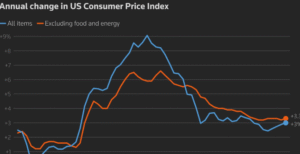$LNG $NATGAS $XOM
#LNG #NaturalGas #EnergyMarkets #GreenTransition #OilAndGas #EnergyCrisis #EnergyInvestment #GasPrices #FossilFuels #RenewableEnergy #GlobalMarkets #EnergyTransition
Since 2022, the global energy landscape has been reshaped by a growing emphasis on liquefied natural gas (LNG) expansion projects. This shift has been partly driven by geopolitical disruptions, most notably the Russian invasion of Ukraine, which led to sanctions on Russian energy exports. The resulting natural gas supply shortfall forced Europe and North America to scramble for alternative sources. To mitigate shortages and safeguard future energy security, several governments and private sector players announced major LNG production and export projects. These investments, aimed at bolstering capacity, have now emerged as a cornerstone of energy policy across multiple regions. Key beneficiaries of this surge include multinational companies such as Exxon Mobil ($XOM) and Cheniere Energy ($LNG), as well as nations with vast natural gas reserves in the U.S., Qatar, and Australia.
The financial markets have reacted dynamically to these developments. LNG-centric stocks and ETFs have seen increased trading volumes and steady gains, reflecting investor confidence in the sector’s long-term potential. For instance, shares of natural gas producers have outperformed broader energy indices over the past year, suggesting optimism about the industry’s pivotal role in the global energy mix. Moreover, the rising demand for LNG has imposed upward pressure on natural gas prices, adding complexity to inflation concerns in gas-importing countries. The futures markets show sustained bullish sentiment, with traders wagering on tighter supplies and higher prices over the next five to ten years as new facilities come online to meet growing international demand.
While this natural gas renaissance has secured substantial financial backing, it has invited sharp criticism from environmental advocates. The move raises pertinent questions about the timing and alignment of these projects with ambitious climate goals set forth in the Paris Agreement. Investments in long-term fossil fuel infrastructure could lock in carbon emissions for decades to come, potentially delaying the green transition to renewable sources like solar and wind. From a financial perspective, the risk of regulatory backlash and stranded asset scenarios could weigh on companies heavily reliant on LNG if climate policies tighten faster than expected. Analysts argue that firms investing in carbon capture, hydrogen blending, or offsets alongside LNG developments may stand to gain a competitive edge by hedging future environmental risks.
Despite these concerns, the near-term outlook for LNG remains robust. Converging economic interests and energy needs have rendered it an attractive compromise fuel for countries looking to phase out coal more rapidly while maintaining energy stability. This dichotomy between meeting current energy needs and decarbonization targets underscores the complexity of the green transition and its associated market dynamics. Investors and policymakers alike will need to tread carefully, balancing energy security, profit incentives, and sustainability mandates in an increasingly interconnected global market. For now, LNG appears set to remain a vital component of the world’s energy portfolio during this critical transition phase.










Comments are closed.